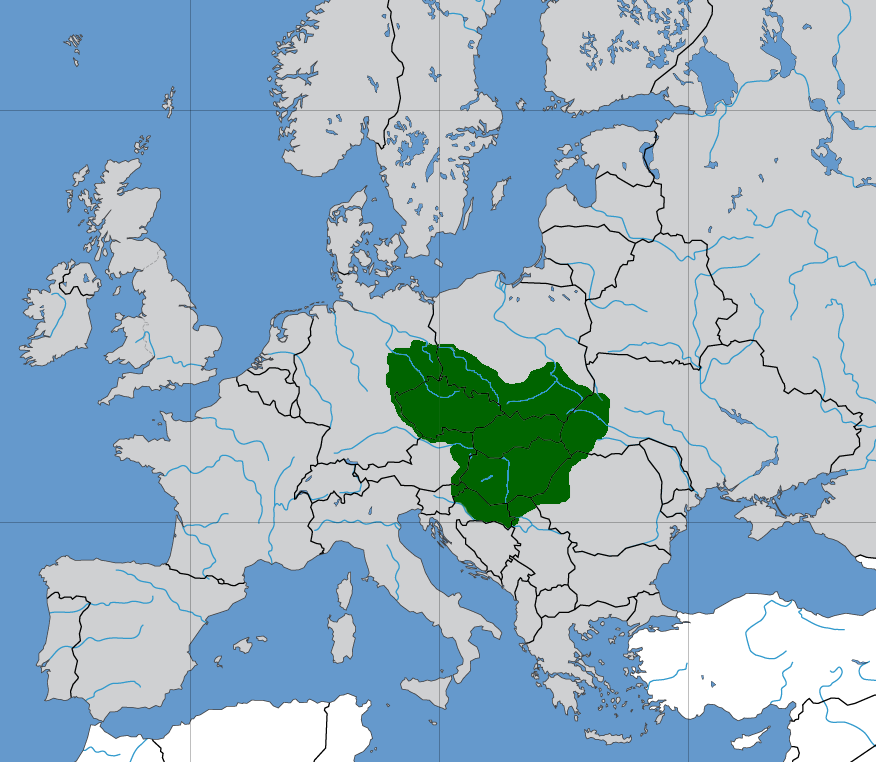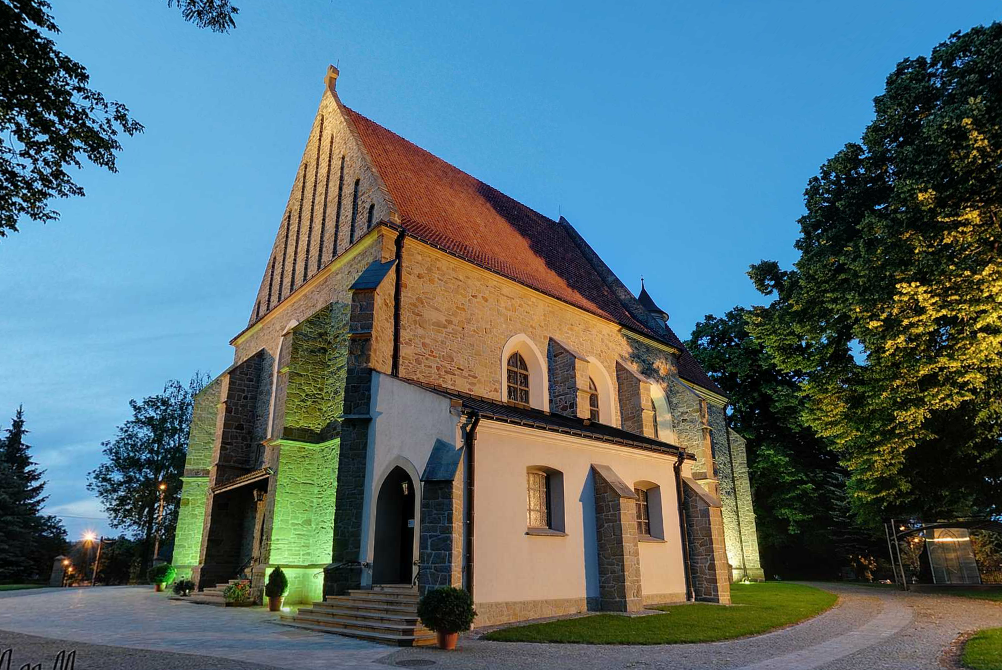|
Wisłoka
The Wisłoka is a river in south-eastern Poland, a tributary of the Vistula river, with a length of and a basin area of . The highest elevations reach an elevation of , while the lowest point in the valley of the river Wisłoka lies at an elevation of above sea level.Bulletin. Instytut Geologiczny (Poland). 1956. p. 188 Towns and townships around Wisłoka Tributaries Tributaries of the Wisłoka include: * Jasiołka * Tuszymka * Wielopolka * Ropa * Grabinianka See also * 1934 flood in Poland References ;Bibliography * Fastnacht, Professor Adam. – Slownik Historyczno-Geograficzny Ziemi Sanockiej w Sredniowieczu, Kraków 2002, ;Notes See also *Rivers of Poland Following is a list of rivers, which are at least partially, if not predominantly located within Poland.KSNG (2002–2014)List of Names of Flowing Waters (Wykaz nazw wód płynacych)(PDF file, direct download 1.47 MB), Komisja Standaryzacji Nazw Ge ... Rivers of Poland Rivers of Podkarpackie Voivode ... [...More Info...] [...Related Items...] OR: [Wikipedia] [Google] [Baidu] |
Dębica
Dębica (; yi, דעמביץ ''Dembitz'') is a town in southeastern Poland with 44,692 inhabitants as of December 2021. It is the capital of Dębica County. Since 1999 it has been situated in the Podkarpackie Voivodeship; it had previously been in the Tarnów Voivodeship (1975–1998). Dębica belongs to the historic province of Lesser Poland, and for centuries it was part of the Sandomierz Voivodeship. Area and location According to the 2006 data, Dębica's area is . Arable land makes 42% of the area of the town, while forests make 19%. Dębica is the seat of the county, and the town covers 4.34% of the county's area. Dębica lies at the border of two geographical regions of Poland - the Carpathian Piedmont in southern districts of the town, and the Sandomierz Basin in its north, along the Wisłoka river. Economy Since the mid-1930s Dębica, despite its size, has been a large industrial hub. A number of companies were then created thanks to governmental industry development prog ... [...More Info...] [...Related Items...] OR: [Wikipedia] [Google] [Baidu] |
Ropa (river)
Ropa is a river of mountainous southern Poland, a tributary of the Wisłoka. Near the town of Łosie, Gorlice County, the Ropa was dammed in 1994 to create Lake Klimkowskie. Downstream it flows through Biecz and joins the Wisłoka at Jasło. During the 2010 Central European floods the Ropa flooded Jasło on June 5. Its own tributaries include the Libuszanka and the Zdynia Zdynia ( rue, Ждыня, uk, Ждиня, ''Zhdynia'') is a village in the administrative district of Gmina Uście Gorlickie, within Gorlice County, Lesser Poland Voivodeship, in southern Poland, close to the border with Slovakia. It lies approxi .... References Rivers of Poland Rivers of Podkarpackie Voivodeship Rivers of Lesser Poland Voivodeship {{Poland-river-stub ... [...More Info...] [...Related Items...] OR: [Wikipedia] [Google] [Baidu] |
Grabinianka
Grabinianka (also known as the ''Czarna'') is a river of Poland, a tributary of the Wisłoka The Wisłoka is a river in south-eastern Poland, a tributary of the Vistula river, with a length of and a basin area of . The highest elevations reach an elevation of , while the lowest point in the valley of the river Wisłoka lies at an ele ... near Dębica. Rivers of Poland Rivers of Podkarpackie Voivodeship {{Poland-river-stub ... [...More Info...] [...Related Items...] OR: [Wikipedia] [Google] [Baidu] |
Tuszymka
Tuszymka is a river in south-eastern Poland, a tributary of the Wisłoka river, with a length of . The source of the river is near the village of Bukowiec. The river runs near the village of Kamionka where there is a lake. Towns and villages around Tuszymka See also *Rivers of Poland Following is a list of rivers, which are at least partially, if not predominantly located within Poland.KSNG (2002–2014)List of Names of Flowing Waters (Wykaz nazw wód płynacych)(PDF file, direct download 1.47 MB), Komisja Standaryzacji Nazw Ge ... Rivers of Poland Rivers of Podkarpackie Voivodeship {{Poland-river-stub ... [...More Info...] [...Related Items...] OR: [Wikipedia] [Google] [Baidu] |
Wisłok
Wisłok is a river in south-eastern Poland, a tributary of the San River, with a length of 220 kilometres and a basin area of 3,538 km2 (all in Poland). The root of the name ''Vis-lok'' is Indo-European or pre-Indo-European. The first metal bridges on highways were built in Galicia. They were bridges on the Wisłok river in Rzeszów (1877) and Raba in Książnica (1877). The construction of the first latticework metal bridges in Poland's territories. History There is no data on the settlements in the early Iron period when an old trade route crossed the region along Wisłok River Valley. The Wisłok valley must have been an important trade route and human settlement axis as early as 9th or 10th century. The region subsequently became part of the Great Moravian state. Upon the invasion of the Hungarian tribes into the heart of the Great Moravian Empire around 899, the Lendians of the area declared their allegiance to Hungarian Empire. The region then became a site of conte ... [...More Info...] [...Related Items...] OR: [Wikipedia] [Google] [Baidu] |
Pilzno
Pilzno is a town in Poland, in Subcarpathian Voivodeship, in Dębica County. It has 4,943 inhabitants as of 2018. It is located at the junction of important roads – West-East European E40 Highway, and National Road 73 (''Droga Krajowa nr. 73, DK 73'') to Jasło, but at the same time, it has no railroad station, even though in 1939 Polish government began construction of the Dębica – Jasło line, via Pilzno. The project was never completed. History Granted Magdeburg rights in 1354 by King Kazimierz Wielki, Pilzno has a rich history. In the Polish-Lithuanian Commonwealth it was the capital of a powiat, located in the Sandomierz Voivodeship. Most important historical building is St. John's church, with the famous ''Shrine and Painting of Our Lady of Consolation'', founded around 1256. It is located near the medieval market square. In the early days of Polish statehood, the area of Pilzno probably belonged to the Vistulans. The name of the town for the first time appears in 1 ... [...More Info...] [...Related Items...] OR: [Wikipedia] [Google] [Baidu] |
1934 Flood In Poland
1934 flood in Poland ( pl, Powódź w Polsce, 1934) was the biggest flood in the Second Polish Republic. It began with heavy rains in the Dunajec river basin, which took place between 13 and 17 July 1934. In the following days, the flood spread to the basins of the Raba, Wisłoka, and Skawa, all of which are tributaries to the Vistula. The disaster took the lives of 55 people and caused damages estimated at 60 million interbellum zlotys. The flood The first heavy rains took place on 13 July 1934, and it continued during the coming days, with more than of rain noted on 14 and 15 July. Peak of the rainfall was marked on 16 July, with heaviest rains ever recorded in the Dunajec basin. On that day, of rain fell in the village of Witów, and in Kuźnice—. On the same day, Polish record of rainfall was broken in Tatras valley of Hala Gąsienicowa, where were recorded. Even though the Dunajec basin was the most affected, heavy rain was also recorded in the basins of the Skawa, ... [...More Info...] [...Related Items...] OR: [Wikipedia] [Google] [Baidu] |
Rivers Of Poland
Following is a list of rivers, which are at least partially, if not predominantly located within Poland.KSNG (2002–2014)List of Names of Flowing Waters (Wykaz nazw wód płynacych)(PDF file, direct download 1.47 MB), Komisja Standaryzacji Nazw Geograficznych poza Granicami Rzeczypospolitej Polskiej: Nazwy geograficzne. Pages: 1/348. , p. 85-86 Rivers by length ''For list of rivers in alphabetical order, please use table-sort buttons.'' ...
|
Vistula
The Vistula (; pl, Wisła, ) is the longest river in Poland and the ninth-longest river in Europe, at in length. The drainage basin, reaching into three other nations, covers , of which is in Poland. The Vistula rises at Barania Góra in the south of Poland, above sea level in the Silesian Beskids (western part of Carpathian Mountains), where it begins with the Little White Vistula (''Biała Wisełka'') and the Black Little Vistula (''Czarna Wisełka''). It flows through Poland's largest cities, including Kraków, Sandomierz, Warsaw, Płock, Włocławek, Toruń, Bydgoszcz, Świecie, Grudziądz, Tczew and Gdańsk. It empties into the Vistula Lagoon (''Zalew Wiślany'') or directly into the Gdańsk Bay of the Baltic Sea with a delta of six main branches (Leniwka, Przekop, Śmiała Wisła, Martwa Wisła, Nogat and Szkarpawa). The river is often associated with Polish culture, history and national identity. It is the country's most important waterway and natural symbol, a ... [...More Info...] [...Related Items...] OR: [Wikipedia] [Google] [Baidu] |
Jasło
Jasło is a county town in south-eastern Poland with 36,641 inhabitants, as of 31 December 2012. It is situated in the Subcarpathian Voivodeship (since 1999), and it was previously part of Krosno Voivodeship (1975–1998). It is located in Lesser Poland, in the heartland of the Doły (Pits), and its average altitude is 320 metres above sea level, although there are some hills located within the confines of the city. The Patron Saint of the city is Saint Anthony of Padua. History In the early days of Polish statehood, Jasło was part of the Castellany of Biecz, out of which ''Biecz County'' emerged in the 14th century. A list of rectories, created for collecting tithes, a church in "Jassel" in Zręcin deanery, Kraków diocese, is shown in 1328.Sulimierski, Filip, Bronisław Chlebowski, and Władysław Walewski. ''Słownik Geograficzny Królestwa Polskiego I Innych Krajów Słowiańskich: Warszawa 1880-1902''. Translated by William F. "Fred" Hoffman. Warszawa: BUW. Sekcja Dok ... [...More Info...] [...Related Items...] OR: [Wikipedia] [Google] [Baidu] |
Brzostek
Brzostek is a town in Dębica County, Subcarpathian Voivodeship, south-eastern Poland (historic province of Lesser Poland). It is the seat of the gmina (administrative district) called Gmina Brzostek. As of December 2021, the town has a population of 2,760. It lies on the Wisłoka river, in the foothills of the Carpathians, approximately south of Dębica and west of the regional capital Rzeszów. Brzostek is a local center of education and commerce. History Brzostek gained its Magdeburg rights in 1367, but first documented mentions of the town come from 1123-1125, when a list of possessions of the Benedictine Abbey in Tyniec was created. Among a number of villages specified in the document, there is Brzostek (spelt ''Brestek''). For centuries Brzostek remained a small town, frequently destroyed in numerous wars and conflicts. In 1657 the town was burned by the forces of the Transylvanian prince George II Rákóczi, who crossed into Poland earlier in the year. Following the ... [...More Info...] [...Related Items...] OR: [Wikipedia] [Google] [Baidu] |
Nowy Żmigród
Nowy Żmigród, until 1946 Żmigród ( yi, זשמיגראד / Zhmigrod, german: Schmiedeburg), is a village and rural municipality ('' gmina'') in Jasło County, Subcarpathian Voivodeship, Poland, WNW of Dukla and south of Jasło. History Żmigród received Magdeburg rights during the 14th century. Situated on the commercial roads leading to Red Ruthenia in the east and the Kingdom of Hungary in the south, Żmigród owed its fast growth due to the wine trade, which brought wines to Poland from the Hungarian vineyards. In 1474, during the reign of Casimir IV Jagiellon, Żmigród was plundered and destroyed by the mercenary Black Army of Hungary led by Matthias Corvinus. The city survived two fires during the 16th century (1522 and 1577). Following the Partitions of Poland, from 1772 until 1918 Żmigród was part of the Galician territory of the Austro-Hungarian Empire and began to lose its financial base leading to population decline. Following mass emigration overseas in t ... [...More Info...] [...Related Items...] OR: [Wikipedia] [Google] [Baidu] |




